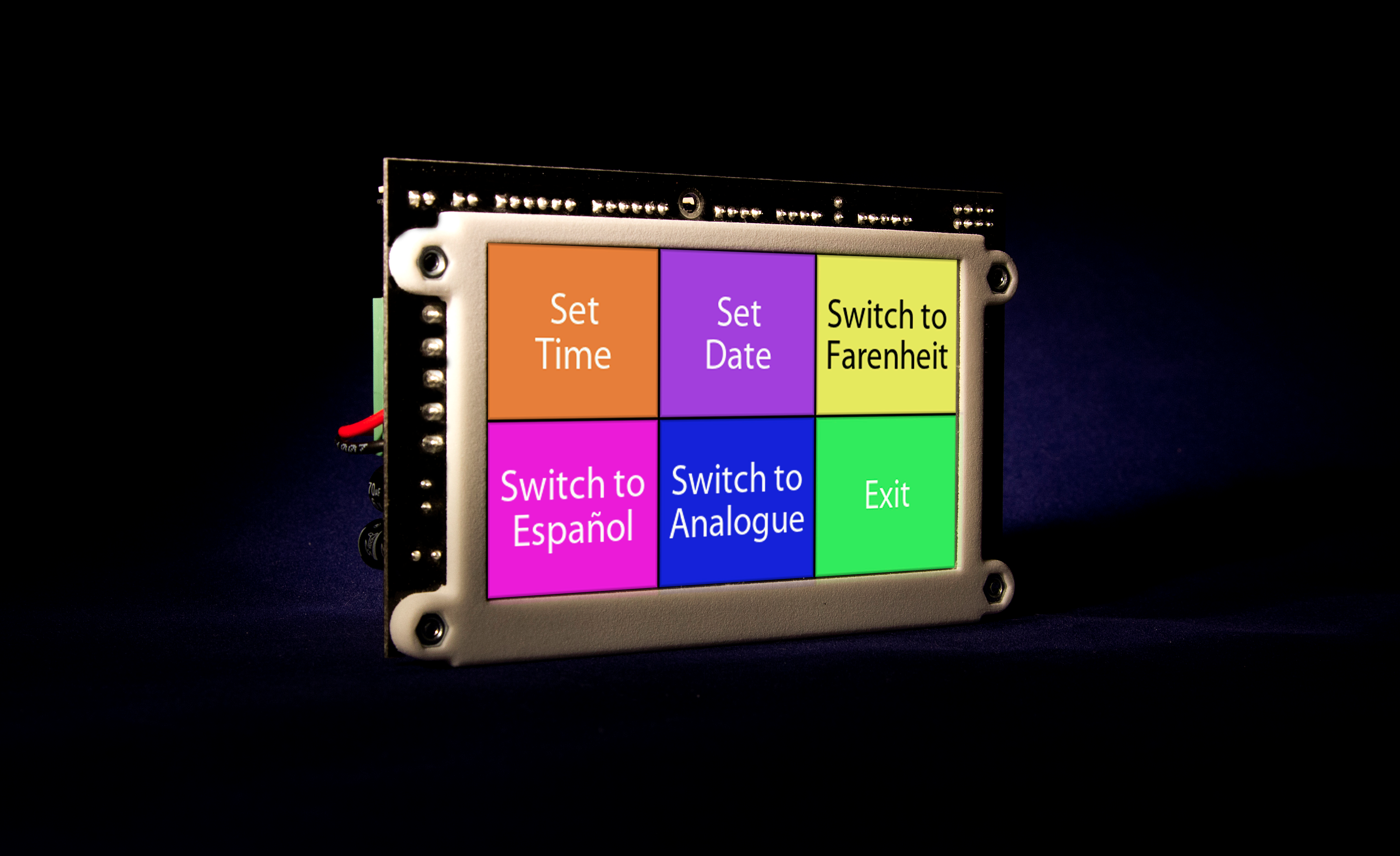
by Gary Mintchell | Nov 7, 2014 | Automation, Data Management, Operations Management, Software
Historical information is used by the Automation Industry to improve process throughput, manage assets, and report to regulatory authorities. Kepware Technologies’ Local Historian Plug-In for KEPServerEX is a flexible, easy to use, and cost-effective solution that provides trending, reporting, and analytics tools with access to historical data using OPC Historical Data Access (HDA).
A Local Data Historian can supplement the existing Enterprise Historian model used in most large-scale industrial environments like Manufacturing, Oil & Gas, and Utilities. Although the Enterprise Historian will continue to have a place in large companies as the final perpetual archive of critical information, many organizations also have a need for a smaller, more flexible historian application that is easy to configure and provides open access to third-party analysis and reporting tools at the point of collection.
Kepware’s Local Historian Plug-In leverages the KEPServerEX communications platform to transport information to its high-speed datastore. The Local Historian provides historical information to custom or off-the-shelf OPC HDA-compliant client applications for data visualization, reporting, and analytics. Because the Local Historian’s design decouples data storage and visualization, users can choose the visualization or reporting solution that best meets their unique needs.
Kepware has tested the plug-in with multiple third-party trending and reporting products to validate its OPC HDA implementation and ensure a seamless user experience. One of the reporting products with which Kepware has completed testing includes XLReporter from SyTech.
“Kepware’s Local Historian is a robust historian backed by Kepware’s long experience in the automation field,” said Peter Kaprielian, CTO, SyTech. “It has been fully tested with XLReporter and both products work seamlessly together. We, along with Kepware, are committed to providing high-quality support for our products.”
The Local Historian Plug-In supports high-speed logging to 10 milliseconds and tiered licensing for up to ten thousand tags. Open standards allow locally-stored data to be accessed from multiple clients with no additional cost per client connection.

by Gary Mintchell | Nov 6, 2014 | Automation, Data Management, Manufacturing IT, Operations Management, Software, Technology
There is a place for closed, proprietary manufacturing software. But standards and open source have proven to be a perfect way to solve additional integration and development problems for integrators and end users. And maybe add some excitement, enthusiasm and innovation, as well.
This post began from a ping on Twitter. Then an email conversation. Then some exploration.
I have followed Andy Robinson (aka @Archestranaut) for several years. As Eliot Landrum explained to me, “He started a project a little bit ago and we are picking up with a renewed interest. Our website can be found here, plus we also have the Twitter account and, most importantly, a GitHub repository.”
The main objective is to build an open, public community among (Schneider Electric/Wonderware) ArchestrA developers. Adds Landrum, “I personally have desired a public, technical conversation among our industry but haven’t found it. So, I decided to make it happen. Other programming communities have gained so much from public, open discussion and code sharing and I want some of that for us! I really think that we can build on each other’s successes and create a friendly community of knowledgeable developers.”
The Website will include tricks, techniques, and tutorials for improved manufacturing software implementation. In the GitHub repository, programmers will share real code! These will be anywhere from simple scripts to full-blown tools. “Anyone is welcome to submit code for inclusion, and Andy and I will be reviewing and monitoring the code,” concludes Landrum.
From the Website
So, what’s this all about anyway? Personally, I think it’s about helping to open up an industry that has been tight-fisted and scared to share anything of value. The automation / system integration industry has traditionally been very secretive about the tools we use and develop in-house. As we’ve seen from the Open Source movement’s success over the past 20 years, this “scared to share” route is a lousy path to take. The advantages of knowledge and code sharing across an industry are well understood and easily observed in industries such as web and mobile app development. Those industries have seen tremendous technical growth and advancement because developers across the industry are sharing knowledge and skills. They have been able to build on each other’s successes to create better tools, resources, and platforms.
The manufacturing / automation / system integration industry, on the other hand? We’re scared of sharing anything for risk of our competitors seeing what we do. In reality, we could be growing a stronger skill base by talking with others and comparing notes.
aaOpenSource is a way for us to start talking, start sharing, and create community. aaOpenSource is focused on tools, knowledge, and tricks for the Wonderware System Platform (ArchestrA). Check out our GitHub project, poke around, and jump on in. Our hope is that aaOpenSource becomes a little hub of like-minded ArchestrA developers who want to create better things for our customers and make our work lives a little better.

by Gary Mintchell | Nov 5, 2014 | Automation, Industrial Computers, Operator Interface
 No doubt current trends in industrial controllers, programmable logic controllers (PLC) and human-machine interfaces (HMI) include driving down the cost of control. Here is one that is an integrated HMI/PLC for less than $400. Interestingly, this is the first product pitched to me in years that touts RS485 serial connectivity. I’d darn near forgotten all about those serial protocols.
No doubt current trends in industrial controllers, programmable logic controllers (PLC) and human-machine interfaces (HMI) include driving down the cost of control. Here is one that is an integrated HMI/PLC for less than $400. Interestingly, this is the first product pitched to me in years that touts RS485 serial connectivity. I’d darn near forgotten all about those serial protocols.
Anyway, here are some specifics from SPLat Controls.
The HMI430 board-level programmable logic controller (PLC) with an integrated 4.3-inch color touchscreen is available at nearly half the cost of previous products with similar functionality. With onboard, ruggedized digital I/O, analog I/O, and the SPLat MultiTrack built-in multitasking operating system, the HMI430 delivers “professional-quality control that is affordable and easy to program, minimizing development time.”
According to the press release, “With multiple serial ports HMI430 offers OEMs an ideal way to flexibly integrate a touchscreen into their solution for small- and medium-sized industrial control applications. The touchscreen—a 4.3-inch 470×272 pixel screen with resistive touch and 64K colors—comes with a repertoire of standard buttons, fonts, and other screen elements. With support for alpha blending, image files, and Z-ordering, HMI430 offers sophisticated visual effects at a price point that OEMs can afford.”
“With the advent of smartphones, all controller applications—medical, industrial, building control—are affected by the end-customers’ expectation of a GUI-driven interface,” noted David Stonier-Gibson, CEO of SPLat Controls. “The HMI430 with an integrated color touchscreen enables OEMs to respond to this ‘iEffect’ and provides the innovative edge that helps small- and medium-sized equipment manufacturers make their products smarter and more competitive.”

by Gary Mintchell | Nov 5, 2014 | Automation, Leadership, News, Operations Management, Organizations
 The Smart Manufacturing Leadership Coalition (SMLC) has announced that the SMLC Executive Committee has elected Michelle Pastel of Corning Inc., to serve as Secretary on the Board of Directors, effective immediately.
The Smart Manufacturing Leadership Coalition (SMLC) has announced that the SMLC Executive Committee has elected Michelle Pastel of Corning Inc., to serve as Secretary on the Board of Directors, effective immediately.
In search for a new Secretary position, the Executive Committee sought a candidate who would represent the voice of the manufacturing industry to further strengthen SMLC’s leading position in Smart Manufacturing through ensuring industry alignment. Michelle Pastel has already made a positive impact on driving SMLC’s technology development and commercialization plans.
SMLC CEO Denise Swink, states, “Michelle Pastel is leading a corporate renaissance in Corning, exploring and embracing Smart Manufacturing philosophies and potential. We are very fortunate for her leading Corning’s representation in SMLC and contributing her experiences, ideas and enthusiasm for leveraging collaboration opportunities with other SMLC members. She will be a key component of the Executive Committee leadership.”
Michelle Pastel earned her degree in Electrical and Computer Engineering from the University of New Mexico. She joined Corning in 1993 as a Systems Engineer, and is currently the Manager of Measurements, Controls, and Systems Innovation in Corning’s Manufacturing Technology and Engineering Division, Advanced Engineering Directorate, focused on collaborating with Science & Technology, as well as Corning’s businesses, to deliver differentiating technology solutions in the areas of measurements, advanced process control, laser processing, imaging systems, and systems integration technologies for products and processes to enable Corning’s research and development programs to innovate new products and manufacturing processes.
Throughout Pastel’s career, she has held technology, engineering and manufacturing positions in many divisions including Corning Optical Fiber, Components Products, Photonics Technology, Optical Networking Devices, and MTE. These roles have included Production Support Leader, Technical Support Leader, New Product Introduction Leader, Process Development Leader, Technology Demonstration Leader, Portfolio Manager, Project Manager, and Department Manager. Through her work in MTE, she also has experience in other businesses including Corning Asahi Video, Consumer Products, American Video, Integrated Die Manufacturing, and S&T.
“I am honored to be given this opportunity and thrilled to be working for the SMLC in this capacity,” states Pastel. “As we work together to implement the Smart Manufacturing philosophy and create the systems that support it, we will undoubtedly improve US manufacturers’ competitive position in the world. This will be an industrial revolution of sorts and I’m excited to be a part of making it possible for each of our organizations.”
SMLC Treasurer, Tom Edgar, states, “Through her practitioner lens, Michelle’s enthusiasm, leadership and commitment to transform the manufacturing industry have proved to be a major contribution to SMLC’s success.”
On July 12, Jim Wetzel, Technical Director at General Mills, accepted the position as SMLC’s new Chair. Wetzel states, “We believe Michelle Pastel represents an ideal champion for Smart Manufacturing; she has demonstrated great leadership skills through identifying opportunities within Corning to leverage and contribute to SMLC’s comprehensive smart manufacturing initiative. The SMLC is honored to have Michelle serve on the Executive Committee and provide a critical role to achieving SMLC’s vision and mission.”
Important information about the organization
The SMLC is a non-profit organization comprised of manufacturing practitioner, supplier, and technology companies; manufacturing consortia; universities; federal agency and government laboratories. SMLC is building the nation’s first open SM Platform for collaborative industrial-networked information applications through at-scale demonstrations. The SM Platform enables manufacturing companies of all sizes to gain easy, affordable access to modeling and analytical technologies that can be tailored to meet cross-industry business-case objectives without having to retrofit existing systems.
SMLC envisions a 21st century SM enterprise (from suppliers, OEMs, and companies to supply chains) that is fully integrated, knowledge-enabled, and model rich. Such visibility across the enterprise (internal and external) would radically improve the ability to inform decisions and drive action.
Partners Involved: Advanced Manufacturing Partnership for Southern California (AMPSoCal); American Council for an Energy-Efficient Economy (ACEEE); Alcoa; American Institute of Chemical Engineers; American Society of Quality (ASQ); Association of State Energy Research & Technology Transfer Institutions (ASERTTI); ARC; CalTech – Jet Propulsion Laboratory; Corning; DOE; Emerson; Electric Power Research Institute (EPRI); General Dynamics; General Electric; General Mills; General Motors; Manufacturing Enterprise Solutions Association (MESA); MTConnect Institute; National Association of State Energy Officials (NASEO); North Carolina State University (NCSU); Nimbis Services, Inc.; NIST; NSF; OSIsoft; Owens Corning; Pfizer Inc.; Praxair; Purdue University; Rockwell Automation; Rensselaer Polytechnic Institute (RPI); Savigent Software; Schneider Electric; Society of Manufacturing Engineers (SME); Southwest Research Institute (SWRI); Spitzer and Boyes LLC; Sustainable Solutions; Tulane – Center for Polymer Reaction Monitoring and Characterization; UCLA; University of Texas – Austin

by Gary Mintchell | Nov 4, 2014 | Automation, News, Process Control

Honeywell Customer Experience Center
Last week I had the opportunity to visit the new Honeywell Process Solutions Customer Experience Center for process industry customers in Houston. Laid out very much like a science and industry museum with wall graphics leading customers from technology to technology across the Honeywell portfolio. This is the third one I’ve heard of this year, and each seems to trump the previous ones.
The highlight is an experience center amphitheater where Honeywell engineers can demonstrate the wide variety of solutions available customized to the industry of the particular group of customers touring.
From the press release, “The new Customer Experience Center (CEC) – located at Honeywell Process Solutions’ global headquarters at 1250 W. Sam Houston Parkway S. – brings to life many of the newest, high-tech innovations for customers in the oil and gas, refining, petrochemicals, mining, power generation, pulp and paper, and other industries. The center includes, for example, a plant control room outfitted with Honeywell’s Experion Process Knowledge System (PKS) Orion Console. The console is a completely new interface that uses the integration of larger screens, touchscreen displays, mobile device capabilities and other technologies to better assist plant operators who are charged with running some of the world’s most critical and complex manufacturing facilities.”
The $5 million CEC will be a destination showcase site for Honeywell’s customers from process industries throughout the world.
“There’s only so much someone can learn about a new technology by talking about it. The goal of the new Customer Experience Center is to physically show our customers what these systems look like and how they can help them solve their most daunting manufacturing challenges,” said Olivier Biebuyck, global vice president of marketing and strategy, Honeywell Process Solutions. “Even seeing the setup in a smaller scale like this gives our customers a much better idea for how the technology works to improve the safety, reliability and efficiency of their plants.”
Other CEC highlights include field instrument technologies – such as transmitters used to monitor pipelines – that have been transformed in recent years into smart devices that deliver more-relevant information to operators in the control room, as well as to mobile operators. The center also demonstrates how Honeywell safety, physical and cyber security systems can be fully integrated together within facilities to achieve the highest level of asset protection, and features advanced software that helps manufacturers design their processes, train their operators and optimize daily operations.












